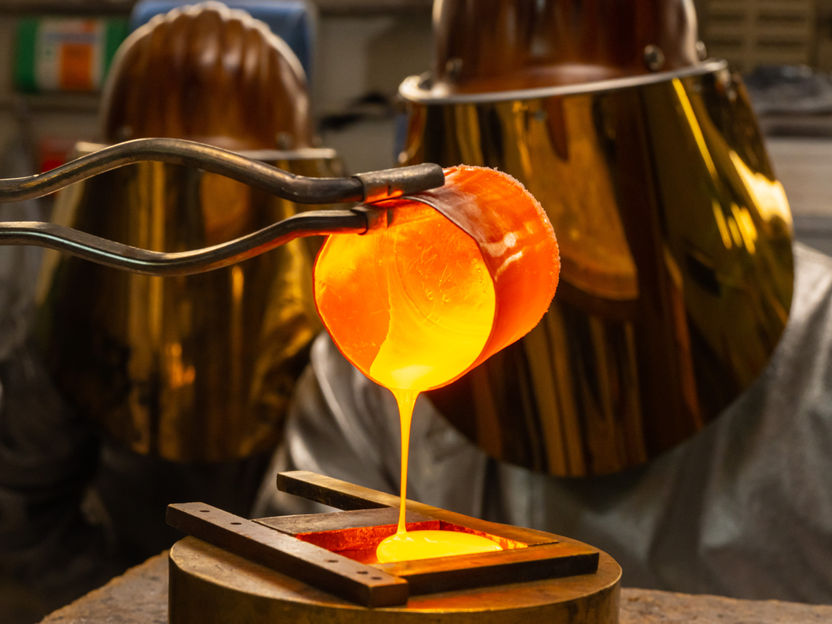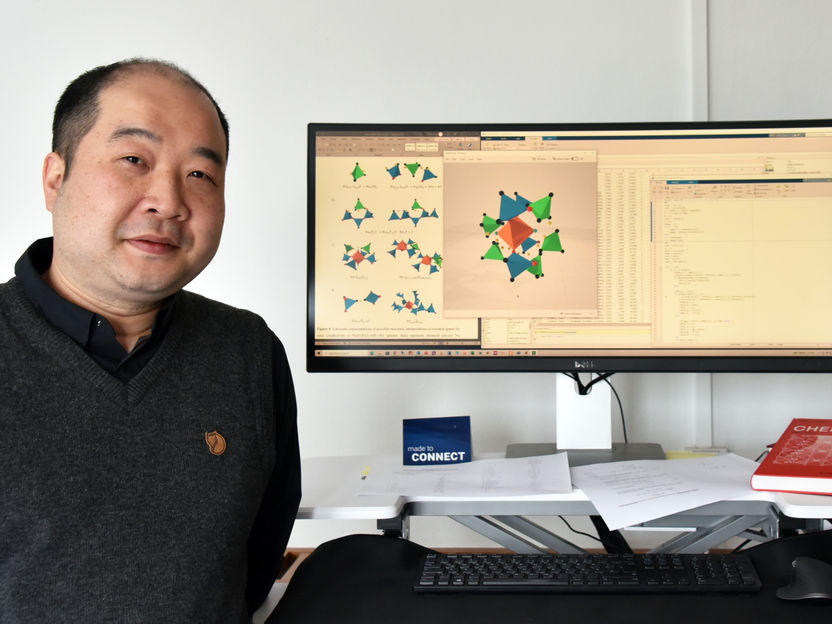New glass from the computer
Material researchers are developing computer-aided methods, with which glass can be developed in a more time- and energy-efficient manner
glass is a very special material: it can be produced in almost unlimited variety from compounds of almost all elements of the periodic table. The only prerequisite is that the components can be melted together and that the melt is then cooled quickly enough. In the process, the liquid mixture solidifies and forms a glass. "Glass is therefore a frozen liquid," illustrates glass chemist Prof. Dr Lothar Wondraczek from the University of Jena. As great as the diversity in composition is, as varied are the properties of the resulting glasses.

Melting glass, symbolic image. Up to now, the development of new glass materials has been a time-consuming and energy-intensive process.
Jens Meyer (University of Jena)

Dr. Zhiwen Pan is first author of the current publication, within the Jena materials researchers present a method that allows the search for correlated dependencies in the material composition during glass fabrication to become significantly faster and efficient in the future.
Anne Günther (University of Jena)


For material science, however, this is a problem, because unlike crystalline materials, glass does not have an ordered inner structure. Instead, after cooling, its atomic components remain arranged more or less as they were in the liquid state. Material scientists speak of correlated disorder: although there is basically no recurring, periodic arrangement of atoms, there is also no pure randomness. Instead, there are certain construction rules and correlations that result from the interaction of the components with each other. "In order to find chemical recipes for glasses with adapted properties, lengthy and experimentally complex optimization processes are often necessary," says Wondraczek. "It is therefore a particular challenge to find exactly those construction rules and chemical correlations that are significant for a certain property or combination of properties." For example, the interaction of certain chemical components can lead to an improvement in mechanical strength. If, however, the glass is also to have a defined ionic conductivity for battery applications, for example, completely different chemical correlations could be relevant. Researchers led by Lothar Wondraczek have now presented a method that can make the search for such correlated dependencies much faster and more efficient in the future. As they report in the scientific journal "Advanced Science", they hope this will unlock new paths to glass materials with optimized properties.
Which 'genes' determine the material properties?
The structural-chemical correlations underlying the practical properties are – in reference to the life sciences – strikingly referred to as 'genes'; the totality of all properties of a material thus results from its 'genome'. As an example, the Jena researchers have set their sights on the conductivity of sodium ions. In complex, so-called polyionic glasses, they want to find out which combinations of chemical components are responsible for the practically achievable conductivity. Such ion-conducting glasses can be used in solid-state batteries, for example. "First of all, we need a sufficiently large and reliable set of experimental data, which we can then investigate using genome analysis methods," says Zhiwen Pan, first author of the publication. Comparable to approaches used in bioinformatics, this method searches for the property-determining 'genes', except that in this case a material and not a living organism is involved.
The polyionic glass under investigation consists of a combination of oxides, fluorides, sulphates, phosphates and chlorides. The observable material properties result from interactions of this multitude of chemical components. Due to the complexity, however, statements about the structure and spatial arrangement of the basic elements are only possible to a very limited extent, so that the resulting properties are hardly predictable. Instead of time-consuming laboratory experiments, optimal compositions can now be identified with the help of analytical models. "We were also able to show that the ‘genes’ we found now fit very well with the little we know about the structure of these glasses from spectroscopic investigations," Wondraczek sums up.
In the tradition of Otto Schott
In their 'genome analysis' of glass, the Jena team is continuing methodological approaches that were first introduced in Jena 130 years ago by Otto Schott, the pioneer of glass research. "Schott was the first to develop modern glasses through systematic variations in chemical composition. From his observations, he derived correlations between chemistry and practical properties," says Wondraczek. Together with physicist Adolf Winkelmann, at that time a professor at the University of Jena, Schott translated these findings into mathematical regression models, in some ways a precursor to what researchers use today as part of 'machine learning'.





























































